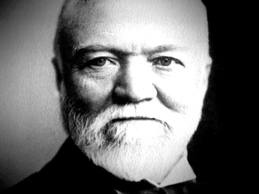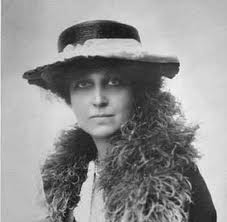 On Tuesday, we started a three-part series about educational opportunities for non-profit professionals. The first post looked closely at North Park University and their Master of Nonprofit Administration program (M.N.A.). The second post in the series investigated the Center on Philanthropy at Indiana University and everything they offer. Today, we’re zooming out and taking a wider view.
On Tuesday, we started a three-part series about educational opportunities for non-profit professionals. The first post looked closely at North Park University and their Master of Nonprofit Administration program (M.N.A.). The second post in the series investigated the Center on Philanthropy at Indiana University and everything they offer. Today, we’re zooming out and taking a wider view.
Lots of institutions
I invested the first two days of this blog series talking about two non-profit studies programs I think are really excellent. However, there are many different options available to those of you wishing to secure a certificate or degree in something related to the non-profit sector. The following is just a short list of other centers and institutes found in the United States:
 Institute for Nonprofit Education and Research at University of San Diego
Institute for Nonprofit Education and Research at University of San Diego- Center for Civil Society at University of California, Los Angeles
- Center on Philanthropy and Civil Society at The City University of New York
- Center on Philanthropy and Public Policy at University of Southern California
- Helen Bader Institute for Nonprofit Management at University of Wisconsin-Milwaukee
- Institute for Human Services & Public Policy at Louisiana State University in Shreveport
- Institute for Nonprofit Organization Management at University of San Francisco
- Johns Hopkins Center for Civil Society Studies at Johns Hopkins University
- Lodestar Center for Philanthropy & Nonprofit Innovation at Arizona State University
- Nancy Bell Evans Center on Nonprofits & Philanthropy at University of New York
Don’t make a rash choice. Follow the advice that you received from your high school guidance counselor: “Do your homework and thoroughly investigate these programs to find the right fit for you.”
Lots of options
 I like to joke with friends and colleagues that I went to the non-profit school of hard knocks to get my degree, but I’m really just being a joker when I say things like that. In reality, I attended the University of Illinois at Urbana-Champaign and received both my BA of Urban Planning and Masters of Urban Planning.
I like to joke with friends and colleagues that I went to the non-profit school of hard knocks to get my degree, but I’m really just being a joker when I say things like that. In reality, I attended the University of Illinois at Urbana-Champaign and received both my BA of Urban Planning and Masters of Urban Planning.
Now some of you are probably wondering what urban planning has anything to do with the non-profit sector. I think Shannon Bond does a great job answering this question in her about.com article titled “A Guide to Nonprofit-Focused Graduate Degree Programs” when she said:
“Is there a program out there for you? You may be surprised at the variety of nonprofit-focused degree programs that exist. Here are descriptions of a few . . . MUP: A Masters of Urban Planning degree focuses on city revitalization, empowerment of impoverished areas, and environmental concerns. Graduates typically secure jobs in such organizations as the UN, USAID, the World Bank, local and state housing agencies and nonprofit organizations that assist the homeless.”
Shannon highlights a number of other graduate degree options including: Masters of Business Administration, Masters of Public Administration, Masters of Public Policy, and a Masters of Social Work. I encourage those of you who are seeking non-profit degrees and certifications to look at all of your options. Click here and start with Shannon’s article.
Of course, going to school nowadays has gotten really expensive. If you can’t afford to enroll in an institution of higher learning, I suggest looking more closely at some of the certificate programs that we talked about in the first and second parts of this blog series.
If neither a certicate or degree are in your future, you can always do it the old fashion way and get some “on the job experience”. The non-profit sector is always looking for good men and women regardless of their level of education.
Did you graduate from a higher education institution with a non-profit related degree? If so, please share more about your alma mater. If not, please share a non-profit experience from your past that you can honestly say helped shape who you are today. We can learn from each other.
Here’s to your health!
Erik Anderson
Founder & President, The Healthy Non-Profit LLC
www.thehealthynonprofit.com
erik@thehealthynonprofit.com
http://twitter.com/#!/eanderson847
http://www.facebook.com/eanderson847
http://www.linkedin.com/in/erikanderson847
























